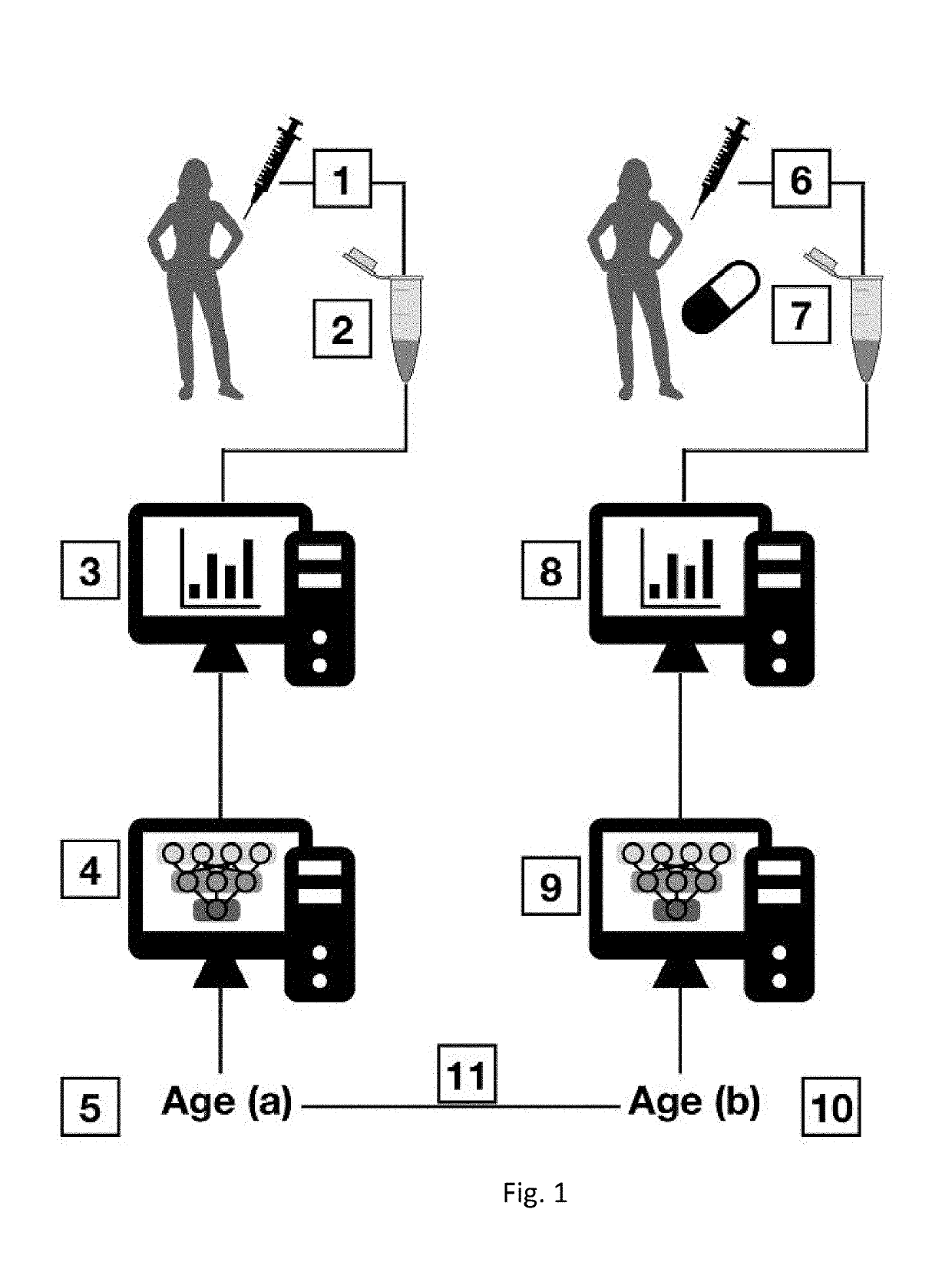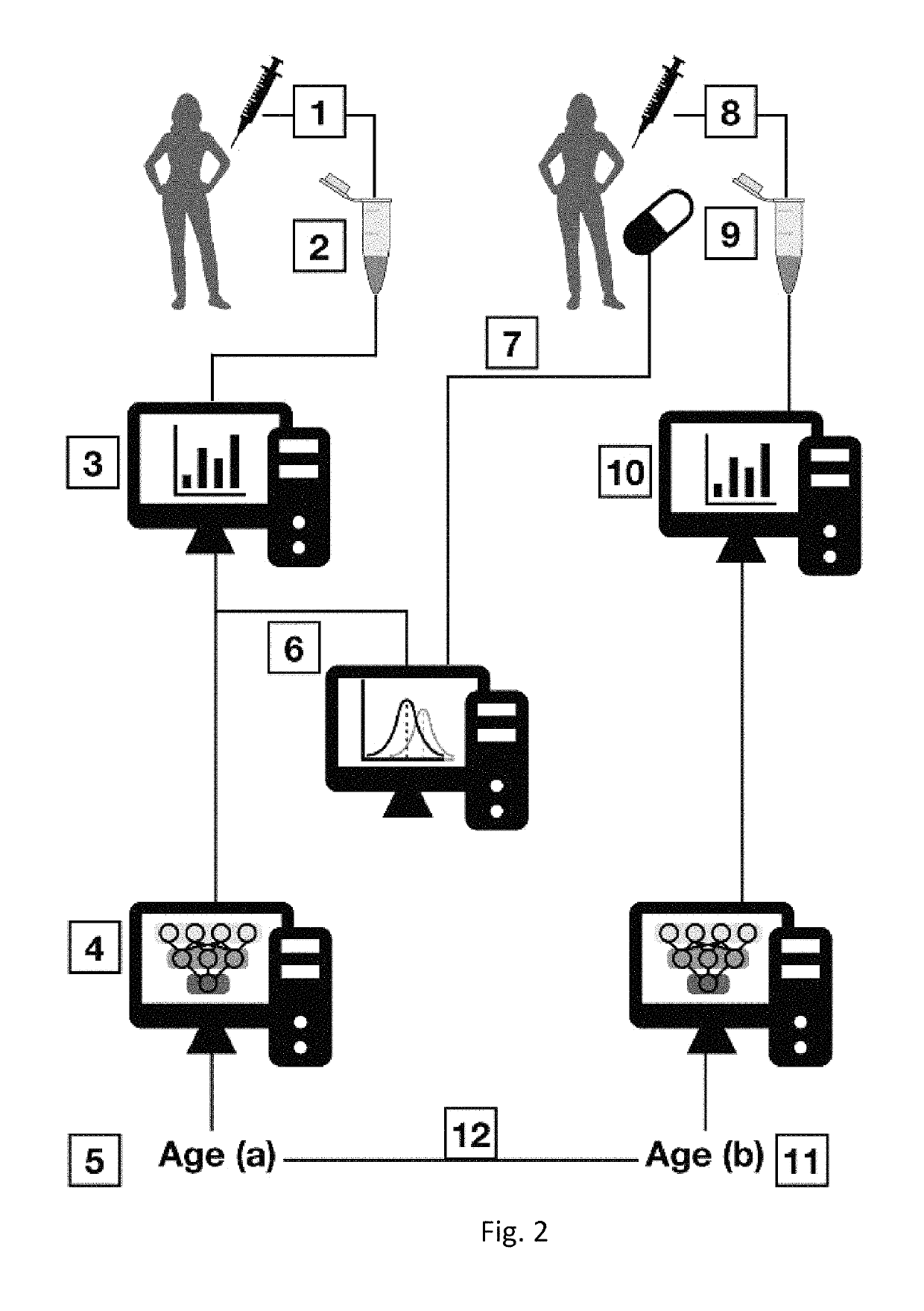Deep transcriptomic markers of human biological aging and methods of determining a biological aging clock
- Summary
- Abstract
- Description
- Claims
- Application Information
AI Technical Summary
Benefits of technology
Problems solved by technology
Method used
Image
Examples
example 1
[0251]Age Prediction Models as a Target Identification Tools
[0252]FIG. 9 illustrates the list of selected targets based on the importance ranking provided by the deep transcriptomic clocks and other machine learning methods. In the present study, we explore several methods to evaluate the importance of features (genes) on age prediction. Genes were ranked by four methods: differential expression analysis, linear regression with elastic regularization (ElasticNet; genes ranked by absolute values of their regression coefficients for a model), Random Forest (Gini importance value of each gene). Next, we explored the relative importance values assigned to genes by the Deep Feature Selection model, averaging the importance values of genes for the five-fold cross validation process.
[0253]In addition to feature importance ranking, we also explored the wrapper method, which we have successfully applied previously in the context of identifying the most important blood markers for age predict...
example 2
[0322]Analysis of Age Predictor Outputs
[0323]FIG. 11 illustrates the delta (difference between assigned (predicted) biological age and actual chronological age) bar plots grouped by age ranges for healthy people based on an exemplary validation set as described. Delta demonstrates disagreement between the chronological age and the predicted age. The larger the delta value the large is the disagreement between age values predicted by the model and actual chronological age of individuals. In case of diseases patients, unhealthy aged patients, patients on treatment, the predicted age may significantly differ from their actual chronological age.
[0324]Gene expression profiles were collected from the publicly available repositories Gene Expression Omnibus (ncbi.nlm.nih.gov / geo / ) and ArrayExpress (ebi.ac.uk / arrayexpress / ). Here we present the case studies and example of the analysis of age predictor outputs. Such age predictors can also be used to study age acceleration caused by hazardous...
PUM
 Login to View More
Login to View More Abstract
Description
Claims
Application Information
 Login to View More
Login to View More - R&D
- Intellectual Property
- Life Sciences
- Materials
- Tech Scout
- Unparalleled Data Quality
- Higher Quality Content
- 60% Fewer Hallucinations
Browse by: Latest US Patents, China's latest patents, Technical Efficacy Thesaurus, Application Domain, Technology Topic, Popular Technical Reports.
© 2025 PatSnap. All rights reserved.Legal|Privacy policy|Modern Slavery Act Transparency Statement|Sitemap|About US| Contact US: help@patsnap.com



